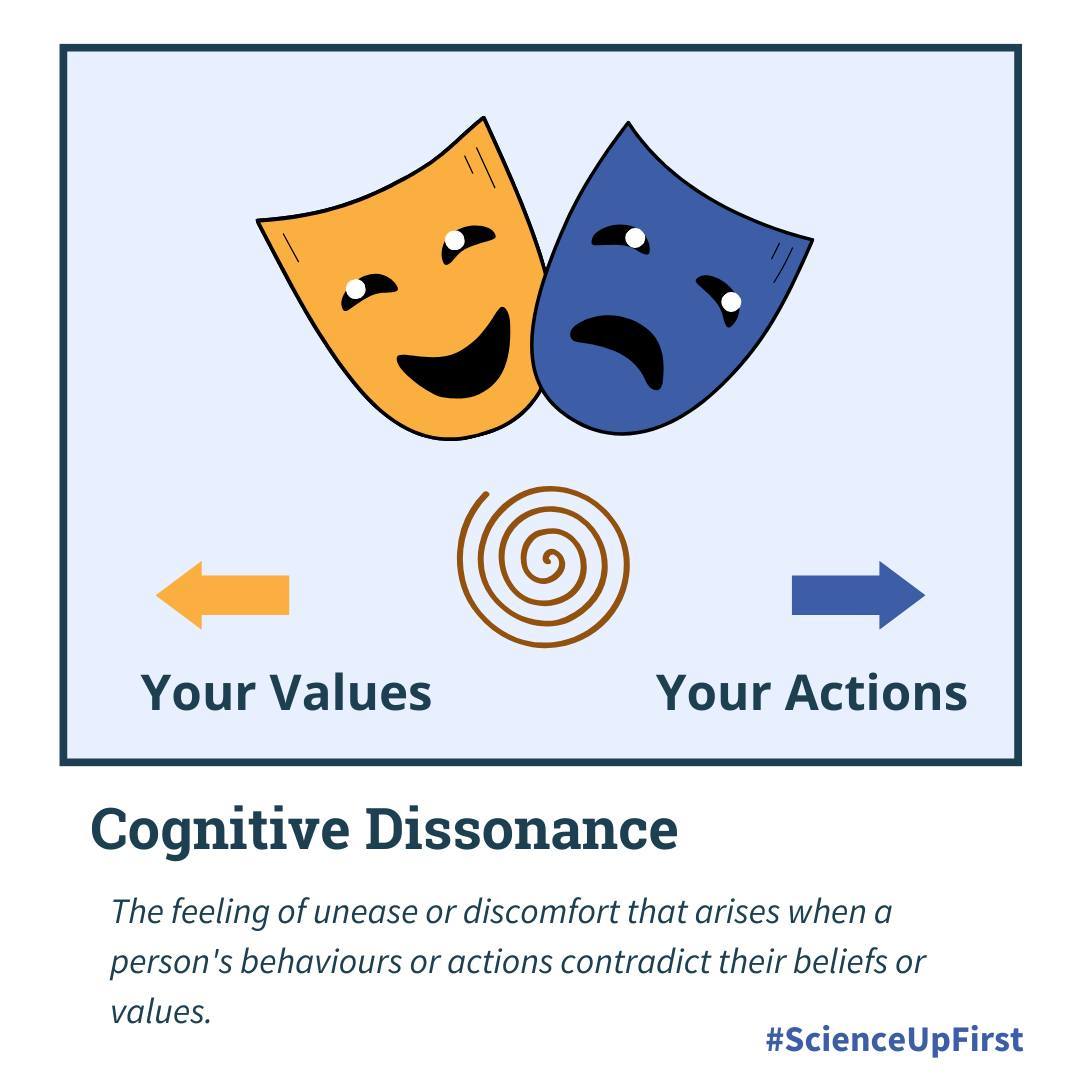
Have you ever felt uncomfortable or embarrassed with a decision/action you made?
You might have experienced cognitive dissonance, which describes the feeling of unease or discomfort one experiences when their actions/behaviours contradict their beliefs/values (1,2,3).
Here are some examples of situations that can result in feelings of discomfort (e.g. guilt, shame, embarrassment, anxiety, anger, irritability) due to cognitive dissonance (2,4):
- Being against animal cruelty, but still craving hamburgers.
- Wanting to be healthy, but not exercising.
- Buying fast fashion, despite knowing the repercussions.
Cognitive dissonance can arise from (2,3,4):
- Social or work expectations that you don’t agree with (i.e. peer pressure, FOMO).
- Learning new information.
- Making a decision.
- An investment of time, money, or effort.
- Addiction
Because the feelings associated with cognitive dissonance are so uncomfortable, we tend to want to avoid them. This can lead people to (2,5):
- Seek information that confirms their existing beliefs (i.e. confirmation bias (6)).
- Hide their beliefs or actions from others to avoid shame or guilt.
- Change their beliefs to justify their behaviours.
Cognitive dissonance can play an important role in the spread of misinformation. When confronted with facts that challenge their misconceptions, people may experience discomfort and, to alleviate it, might resist accepting accurate information that contradicts their beliefs or seek out more information to rationalize their behaviour (7,8).
Cognitive dissonance, in of itself, is not a bad thing as it can help you change unwanted behaviours. When faced with cognitive dissonance, try to (2,3):
- Acknowledge it.
- Identify the conflicting ideas.
- Reflect on what you can do to alleviate it.
- Decide if you want to change your behaviour, mindset or beliefs.
Share our original Tweet!
Have you ever felt uncomfortable or embarrassed with a decision/action you made?
You might have experienced cognitive dissonance. But what is it? #ScienceUpFirst
[1/3] pic.twitter.com/dsfxUt0crz
— ScienceUpFirst | LaScienced’Abord (@ScienceUpFirst) October 4, 2023
View our original Instagram Post!
View this post on Instagram
- Cognitive Dissonance
- What Is Cognitive Dissonance? Definition and Examples
- Cognitive Dissonance Examples: 5 Ways It Pops Up In Everyday Life
- What is Cognitive Dissonance and How Do You Reduce it?
- ‘Fake News’ in Science Communication: Emotions and Strategies of Coping with Dissonance Online
- Confirmation Bias: Definition, Signs, Overcoming
- The Psychology of (Dis)information: A Primer on Key Psychological Mechanisms
- Four Psychological Mechanisms That Make Us Fall for Disinformation




